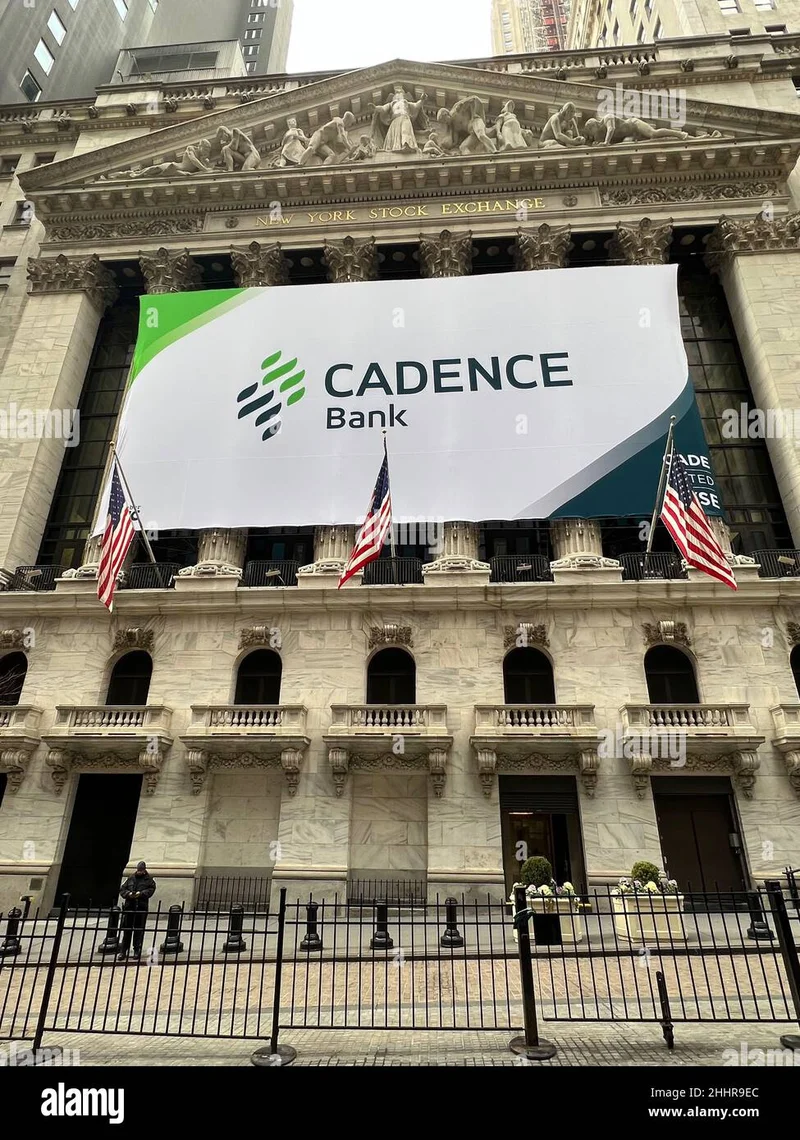This $7.4 Billion Bank Merger Isn't About Getting Bigger. It's About Survival.
When the news broke that Huntington Bancshares was acquiring Cadence Bank in a $7.4 billion all-stock deal, the initial reaction from Wall Street was predictable. A collective, lukewarm shrug. Huntington’s stock dipped 4-5%. Analysts dutifully noted the expansion into "high-growth markets." It was, on the surface, just another Tuesday in the world of regional bank consolidation. Another big fish eating a slightly smaller, but still pretty big, fish.
But I think that reading is spectacularly, fundamentally wrong.
When I saw the announcement flash across my screen, it wasn't the multi-billion-dollar figure that made me sit up straight. It was the map. The combined footprint of this new entity, stretching from the industrial heart of the Midwest down through the booming, vibrant economies of Texas and the Southeast. This isn't a merger. This is the construction of a new kind of financial super-structure, a platform built not just to compete with JPMorgan Chase, but to steel itself for a future where its biggest competitor might just be Apple.
We’re watching the assembly of a next-generation banking engine. And most people are still just counting the bolts.
Building the Financial Railroad for a New America
Think back to the 19th century and the American railroads. You had dozens of small, independent lines that were incredibly useful for getting from one town to the next. But the real economic explosion—the one that powered the Gilded Age and turned the United States into an industrial titan—happened when those lines were consolidated into massive, coast-to-coast networks. Suddenly, you had a system that could move resources, capital, and information at a scale previously unimaginable.
That is precisely what is happening here. Huntington, a Midwest powerhouse, is effectively laying down a high-speed financial track right into the heart of the 21st-century American economy: Houston, Dallas, Atlanta, Nashville. This deal creates a behemoth with $276 billion in assets, sure, but the real story is the data and the reach. What kind of predictive, personalized financial tools can you build when you have a real-time economic dashboard spanning the Rust Belt revival all the way to the Sun Belt boom? What new products can you invent when your institution feels the pulse of that entire economic corridor?

This is the kind of scale that lets you see the future before it happens, and the raw financial power of this new entity—with its $220 billion in deposits and a loan book of $184 billion—is so immense that it moves beyond simple banking and into the realm of economic infrastructure. It’s a staggering leap in capability. The market’s initial jitters, that 4-5% dip in Huntington's stock, is such classic short-term thinking. It’s like looking at the cost of steel for a new bridge without ever imagining the commerce that will flow across it. The question isn't whether this merger is expensive; it's whether they can afford not to do it.
The AI Arms Race Has Come to Banking
Let’s be brutally honest. The era of the charming, mid-sized regional bank is drawing to a close. It’s not because they were badly run; it’s because the technological battlefield has fundamentally changed. The future of banking isn't in the friendliest teller; it's in the smartest algorithm. It’s in AI that can approve a small business loan in minutes, not weeks. It’s in predictive analytics that can help a family save for college before they even realize they’re falling behind.
And you can’t win that war on a budget.
Developing and deploying that kind of technology requires two things in abundance: massive, diverse datasets and an ocean of capital for research and development. This merger delivers both. By combining their operations, Huntington and Cadence are building the server farm necessary to run the AI of tomorrow. This is why Huntington is so confident they can raise their target for ROTCE—or Return on Tangible Common Equity, which in simpler terms is a measure of how much profit they squeeze out of their core business—to a stellar 18-19%. They aren’t just getting bigger; they believe they’re building a smarter, faster, more efficient machine.
Of course, with this kind of scale comes an immense responsibility. How do you become a $276 billion powerhouse without becoming a faceless monolith? Huntington’s promise not to close any of Cadence’s branches is a crucial first step, a signal that they understand the value of the human connection that Cadence built. But the real test will be cultural. Can they fuse the operational might of a super-regional bank with the community-focused soul of a Southern institution? Can they prove that scale can be used to empower customers, not just extract value from them?
This Isn't Consolidation; It's Evolution
Let's call this what it is. This isn't a tragedy of a smaller bank getting swallowed. It's a necessary and, I believe, an incredibly exciting evolutionary leap. The financial world is facing an extinction-level event from FinTech disruptors and tech giants who can move at the speed of light. In this new ecosystem, you either evolve or you become a fossil.
Huntington and Cadence are choosing to evolve. They are lashing their ships together to build an ark, one strong enough to withstand the coming storm and navigate the uncharted waters of a truly digital-first financial world. This deal isn't the end of a story. It's the blueprint for the next one.
